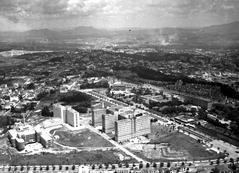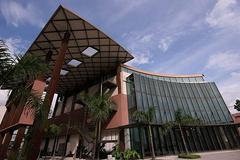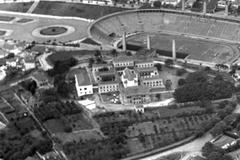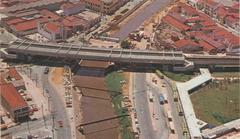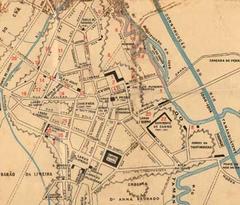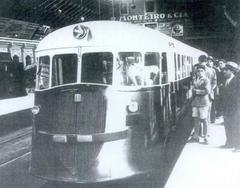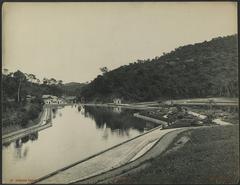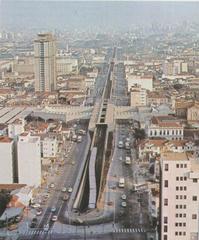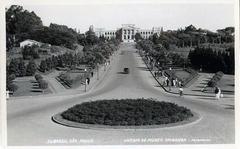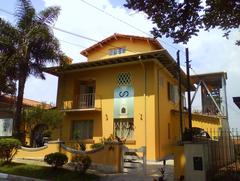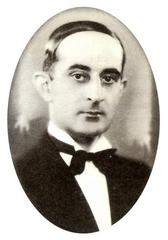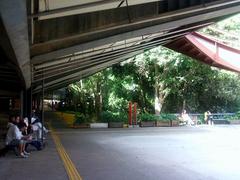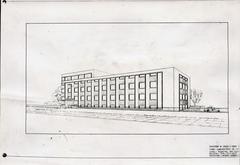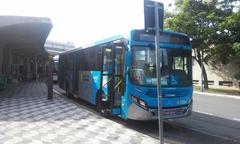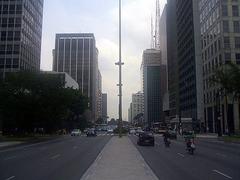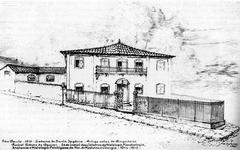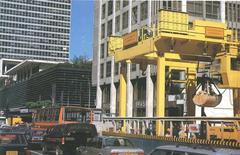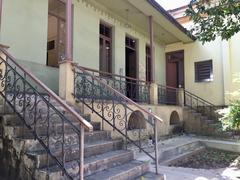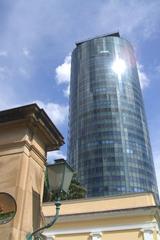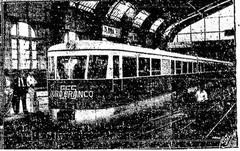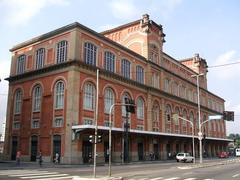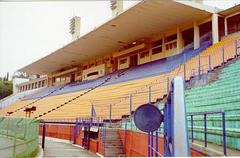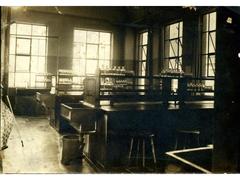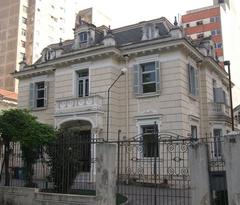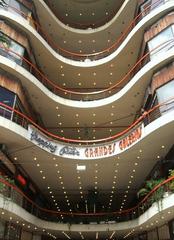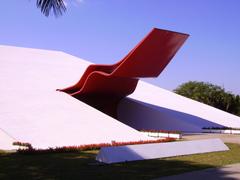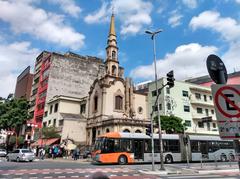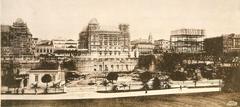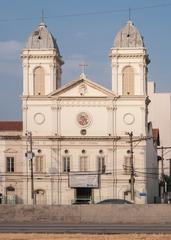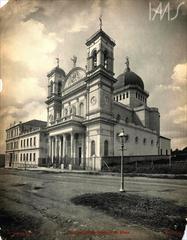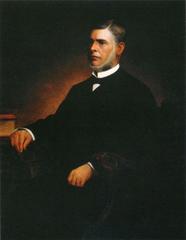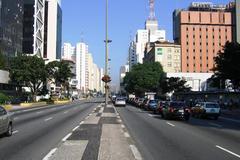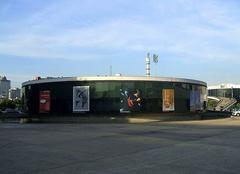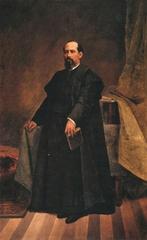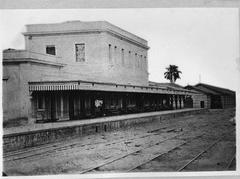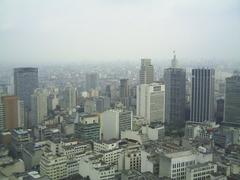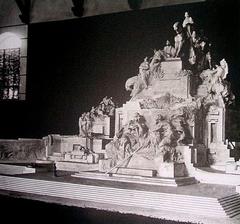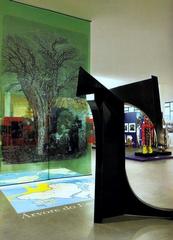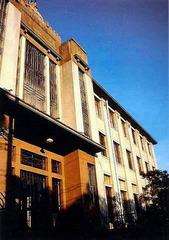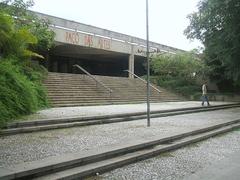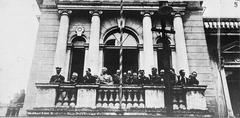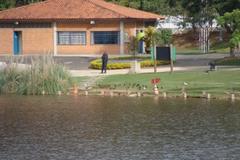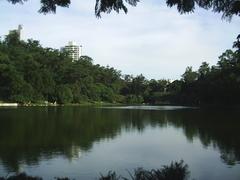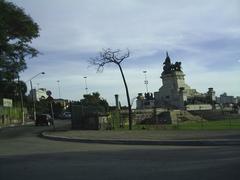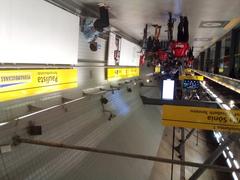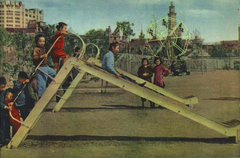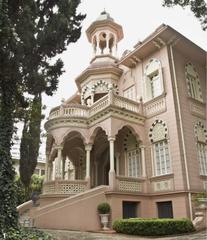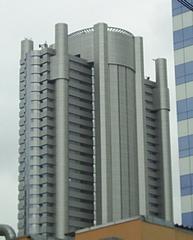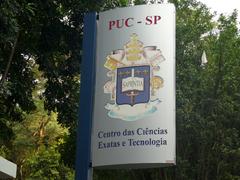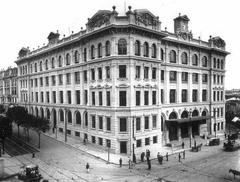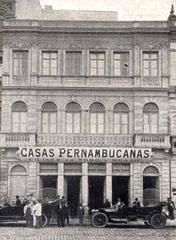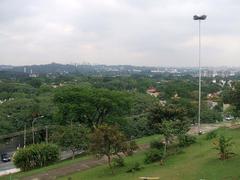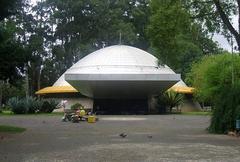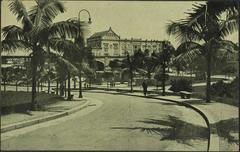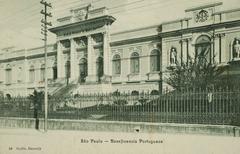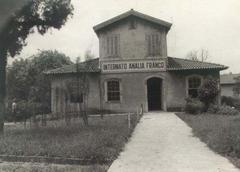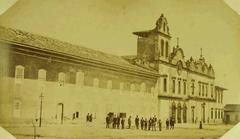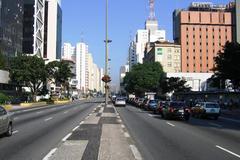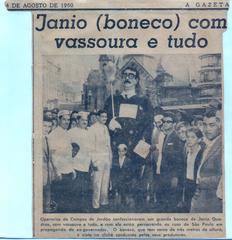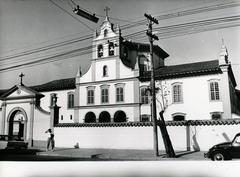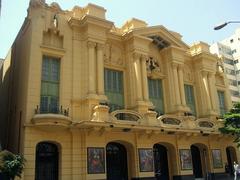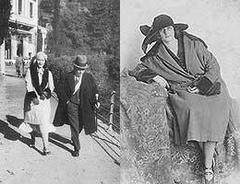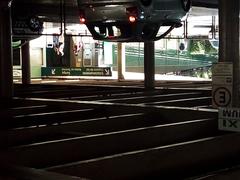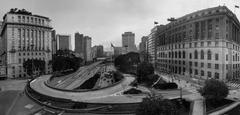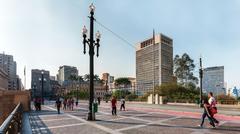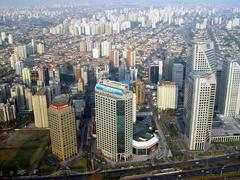Visiting Hours and Ticket Information for Museu da Energia de São Paulo
Date: 25/07/2024
Introduction to Museu da Energia de São Paulo
The Museu da Energia de São Paulo, located in the historic Campos Elíseos neighborhood, is an essential destination for anyone interested in the history of energy and its impact on Brazil. Housed in a building with roots tracing back to the 19th century, the museum offers a rich blend of architectural beauty and educational exhibits. Originally belonging to Henrique Santos Dumont, the brother of aviation pioneer Alberto Santos Dumont, the property was designed by the renowned architect Ramos de Azevedo. Over the years, it has transformed from a private residence to a school, and finally, into a museum dedicated to preserving the history of energy. This transformation is not just a testament to the building’s resilience but also to its importance in São Paulo’s cultural and educational landscape. For more details, visit the official website.
Table of Contents
- Introduction
- Origins and Early History
- Architectural Significance
- Transformation into a Museum
- Exhibitions and Collections
- Social Impact and Community Engagement
- Unique Features and Anecdotes
- Challenges and Preservation Efforts
- Accessibility and Visitor Information
- Frequently Asked Questions (FAQ)
- Practical Travel Tips and Nearby Attractions
- Conclusion
Exploring the Rich History and Visitor Information for Museu da Energia de São Paulo
Origins and Early History
The Museu da Energia de São Paulo is housed in a historic building located at Alameda Cleveland, 601, in the Campos Elíseos neighborhood of São Paulo. This building has a rich history dating back to the 19th century. Originally, the property belonged to Henrique Santos Dumont, the brother of the famous Brazilian aviation pioneer, Alberto Santos Dumont. The house was designed by the renowned architect Ramos de Azevedo, who played a significant role in shaping the architectural landscape of São Paulo during that era.
Architectural Significance
The building itself is a testament to the architectural styles of the late 19th century. Ramos de Azevedo’s design incorporates elements that were prevalent during that period, making it a valuable piece of São Paulo’s architectural heritage. The interior of the house features intricate designs and a layout that reflects the opulence of its original owners. Over the years, the building has undergone several transformations but has managed to retain its historical charm.
Transformation into a Museum
In the years following its construction, the building served various purposes. At one point, it functioned as a school, contributing to the educational landscape of the region. However, its most significant transformation came when it was repurposed as the Museu da Energia de São Paulo. This transition marked a new chapter in the building’s history, as it became a center for preserving and showcasing the history of energy in Brazil.
Exhibitions and Collections
The Museu da Energia de São Paulo offers a comprehensive look into the history of the electrical energy system in Brazil. The exhibitions are meticulously curated to provide visitors with an in-depth understanding of how energy has shaped the country’s development. One of the highlights of the museum is its collection of old photographs that document the building’s history and its various uses over the years.
Social Impact and Community Engagement
For a period of over twenty years, the building served as a shelter for approximately eighty homeless families. This phase of its history is a poignant reminder of the social challenges faced by the community. The building became a place of refuge, albeit one that was often avoided by the local residents due to its association with homelessness. This aspect of its history adds a layer of social significance to the museum, highlighting the complex interplay between heritage and community needs.
Unique Features and Anecdotes
One of the most intriguing features of the Museu da Energia de São Paulo is a replica of a staircase designed by Alberto Santos Dumont. Known for his superstitions, Santos Dumont designed the original staircase in such a way that the last step could only be taken with the right foot. The replica in the museum, however, deviates from this design, encouraging visitors to take the last step with their left foot. This quirky detail adds a touch of personal history and character to the museum.
Challenges and Preservation Efforts
The building’s historical significance and its various transformations have not come without challenges. The structure features low ceilings and a labyrinthine layout, which can make navigation somewhat difficult. Additionally, there are areas within the building that are not utilized for exhibitions, housing materials that are part of the museum’s extensive collection. Despite these challenges, efforts have been made to preserve the building’s integrity and ensure that it remains accessible to the public.
Accessibility and Visitor Information
The Museu da Energia de São Paulo is committed to being accessible to all visitors. The building is equipped with facilities to accommodate individuals with disabilities, ensuring that everyone can explore and appreciate its historical and educational offerings. The museum operates from Tuesday to Saturday, opening its doors at 10:00 AM and closing at 5:00 PM. It remains closed on Mondays and Sundays. For more information, visitors can refer to the museum’s official website.
Frequently Asked Questions (FAQ)
What are the visiting hours of Museu da Energia de São Paulo?
- The museum is open from Tuesday to Saturday, from 10:00 AM to 5:00 PM. It is closed on Mondays and Sundays.
How can I purchase tickets for Museu da Energia de São Paulo?
- Tickets can be purchased at the museum entrance. For more details, you can visit the museum’s official website.
Does the museum offer guided tours?
- Yes, the museum offers guided tours. It is advisable to book in advance through the museum’s official website.
Are there any special events hosted by the museum?
- The museum frequently hosts special events and temporary exhibitions. Check the museum’s official website for upcoming events.
Practical Travel Tips and Nearby Attractions
When planning your visit to the Museu da Energia de São Paulo, consider the following travel tips:
- Public Transport: The museum is easily accessible by public transport. The nearest metro station is República, from which you can take a bus or enjoy a short walk.
- Nearby Attractions: Make the most of your visit by exploring nearby attractions such as the Pinacoteca do Estado de São Paulo and the Sala São Paulo concert hall.
- Photography: The museum allows photography for personal use. Don’t forget to capture the beautiful architecture and intriguing exhibits.
Conclusion
The Museu da Energia de São Paulo stands as a significant cultural and historical landmark in São Paulo. Its rich history, architectural beauty, and comprehensive exhibitions make it a must-visit destination for anyone interested in the history of energy and its impact on society. The museum not only preserves the past but also engages with the community, offering a space for reflection and learning. Stay up to date with the museum’s latest news by following them on social media or downloading the Audiala app for more information.
Summary and Recommendations
The Museu da Energia de São Paulo stands as a remarkable cultural and historical landmark that offers an immersive experience into the evolution of energy in Brazil. From its origins as a private residence designed by Ramos de Azevedo to its role as a shelter for homeless families, the building encapsulates a rich and multifaceted history. Today, it serves as a museum that educates the public on the technological advancements and societal impacts of energy. The museum’s exhibitions, guided tours, and educational programs provide a comprehensive understanding of this vital element of modern life. Additionally, its strategic location in São Paulo makes it an excellent starting point for exploring other nearby attractions such as the Pinacoteca do Estado de São Paulo and the Sala São Paulo concert hall. Whether you’re a history buff, a curious traveler, or someone interested in the future of energy, the Museu da Energia de São Paulo offers a unique and enlightening experience. Stay updated with the museum’s latest news and events by following them on social media or visiting their official website.
References
- Exploring the Rich History and Visitor Information for Museu da Energia de São Paulo (http://www.energiaesaneamento.org.br)
- Visitor Tips and Guide - Museu da Energia de São Paulo – Hours, Tickets, and More (http://www.museudaenergia.org.br)

